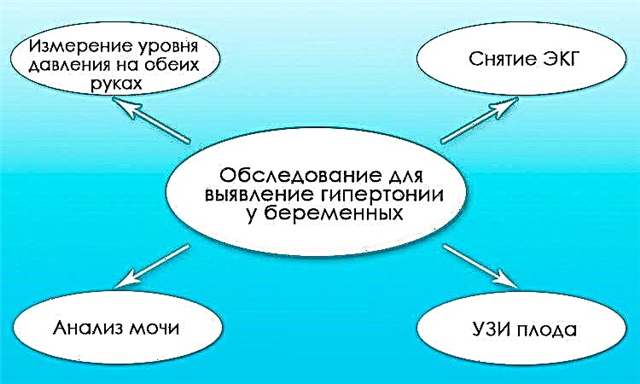Warming up the ear with salt is one of the methods of heat therapy, which is used to restore tissue trophism, eliminate puffiness and inflammation. Dry heat stimulates vasodilation in the affected tissues, resorption of infiltrates, acceleration of blood circulation and lymph flow. Under the influence of high temperature in the body, complex neurohumoral reactions are activated, which ensure the elimination of toxic substances and the acceleration of reparative regeneration of mucous membranes in the organ of hearing.
Thermotherapy is one of the safest methods for relieving spastic and aching pains that often occur with the development of ear diseases. Regular physiotherapy has an anti-inflammatory and wound healing effect on the hearing organ. For this reason, thermotherapy is actively used in pediatric and adult otolaryngology for the treatment of ENT diseases in the early stages of development.
Operating principle

Can I warm my ear with salt? In the absence of hyperthermia and suppuration from the ear canal, dry heat can be used to treat ear diseases. However, experts do not recommend resorting to thermotherapy without an accurate diagnosis. Heating of tissues in the presence of acute inflammation can contribute to the spread of lesions, which is fraught with the development of labyrinthitis and meningitis.
Salt is a readily available heat transfer fluid that is often used as part of the physiotherapy treatment for colds. It has the ability to retain heat, which is of prime importance in thermotherapy. The presence of heat-retaining properties and low thermal conductivity ensures long-term exposure to high temperatures on limited areas of the body.
Heating with salt helps to accelerate the healing processes, which is due to the following properties of heat therapy:
- anti-inflammatory - stimulates the production of leukocytes that destroy pathogens, whose metabolites lead to intoxication;
- trophic-regenerative - accelerate cellular metabolism and blood circulation, which contributes to the intensive nutrition of damaged tissues with oxygen and essential substances;
- antimicrobial - a local increase in temperature in the foci of inflammation promotes the inactivation of pathogenic bacteria;
- antispastic - reduces spasms of smooth muscles, which leads to the elimination of pulsating pain;
- decongestants - reduces vascular permeability and enhances lymph flow, thereby reducing the content of intercellular fluid in the tissues.
Important! You cannot use thermotherapy in the presence of hereditary-degenerative diseases of the nervous system.
Due to the intensive blood supply to the affected tissues, heat therapy is often used in combination with drug therapy. This contributes to the speedy transportation of the active substances of medications to the foci of inflammation, due to which the resorption of infiltrates in the mucous epithelium is accelerated.
Indications and contraindications
Thermal procedures have a pronounced hyposensitizing, antiphlogistic and analgesic effect. For this reason, physiotherapy is often used as part of pediatric therapy to treat most convalescent ENT diseases. In what cases can you warm your ear with salt?
- otitis externa;
- otitis media;
- catarrhal inflammation at the stage of resolution;
- neuritis (damage to the trigeminal nerve);
- severe pain in the ear area.
On the recommendation of specialists, thermotherapy is prescribed at the initial stage of development of LOP-pathology or with attenuation of inflammatory reactions.
It should be noted that in children under 3 years of age, the disease progresses rapidly. It can take only a few hours from the onset of inflammation in the ear cavity to the release of serous exudate. Dry heat should not be used if there is discharge from the ear, which indicates a perforation of the ear membrane. That is why pediatricians do not recommend resorting to warming up in the case of treatment of ear pathologies in preschool children.
Direct contraindications to the use of hot salt are:
- pregnancy;
- heart pathology;
- thrombophlebitis;
- cervical lymphadenitis;
- oncology of ENT organs;
- furunculosis;
- tuberculosis.

Experts warn that in women during gestation, signs of otitis media, eustachitis and other ear diseases are poorly expressed. Therefore, even in the presence of acute inflammation in the organ of hearing, hyperthermia is not always observed. To eliminate the likelihood of complications, it is advisable to consult with an otolaryngologist before using thermotherapy.
What kind of salt should I take?
For thermotherapy, you need to take large table or sea salt. Large crystals of the substance better retain thermal energy, which ensures a longer and more efficient heating of the affected tissues. In addition, small crystals can spill through the tissue sac into the ear canal, which is fraught with tissue irritation and swelling.
Important! Do not add oils or liquids to the salt; this can cause concentrated salt solutions to get on the skin, which can lead to an allergic reaction.
Mint, eucalyptus, orange peel, etc. can be added to the hot salt bag to enhance the anti-inflammatory effect of the physiotherapy procedure. During the procedure, vapors of essential oils will begin to be released from the herbs, which will contribute to the regression of catarrhal processes in the tissues and their speedy recovery.
Instructions for using salt
How to properly warm your ear with salt? During thermotherapy, there is a risk of thermal burns in case of strong heating of the salt. To eliminate the likelihood of injury, it is advisable to arm yourself with a thermometer during the procedure.
Instructions:
- pour salt into a clean sock or a bag made of thick fabric;
- tie the bag tightly so that the salt does not spill out during the procedure;
- heat the bag on both sides in a dry frying pan for 3-4 minutes;
- lie on your side so that the sore ear is below;

- Place a bag of heated salt under the auricle.
Within the first 10 minutes, there will be a tangible relief of the symptoms of ENT disease. But if the slightest burning sensation occurs, thermotherapy should be discontinued.
Can I warm my ear with salt if it hurts? The ability to use dry heat is determined by the nature of the pain. As a rule, throbbing and sharp pains signal the presence of acute inflammation, in which thermotherapy cannot be used.
Aching and recurrent pain in 80% of cases is a sign of chronic inflammation, which can be treated with thermotherapy.
After the procedure, it is advisable to close the external auditory canal with a cotton swab or gauze bandage.
Specialist recommendations
When using dry heat, several important rules must be followed to ensure that the desired therapeutic results are achieved and that thermal burns are avoided. How to heat salt to warm the ear?
- heat the salt only in a bag or sock made of natural cotton fabric;
- you can warm up the bag on the stove in a frying pan or on a baking sheet in the oven;
- the temperature of the heated salt should not exceed 60 degrees.
An increase in temperature in the foci of inflammation negatively affects the reproductive capacity of pathogens.That is why, when colds occur in the body, changes in thermoregulation occur, as a result of which hyperthermia occurs, which adversely affects the pathogenic flora.
How to warm your ear with salt? To speed up the healing process, it is advisable to take into account the following nuances:
- heat therapy is desirable for 20-30 minutes;
- after the procedure, the sore ear must be insulated with a woolen cloth or scarf;
- during the period of treatment, drafts and hypothermia should be avoided;
- during the day it is necessary to perform up to 4 thermotherapy procedures;
- it is undesirable to go outside within 1-2 hours after thermotherapy.
With the development of any ear pathology, it is necessary to get competent advice from an otolaryngologist. Self-medication without otoscopy and determining the type of ENT disease can cause the development of complications such as mastoiditis, purulent otitis media, myringitis, labyrinthitis, etc.

 Important! You cannot use thermotherapy in the presence of hereditary-degenerative diseases of the nervous system.
Important! You cannot use thermotherapy in the presence of hereditary-degenerative diseases of the nervous system.


